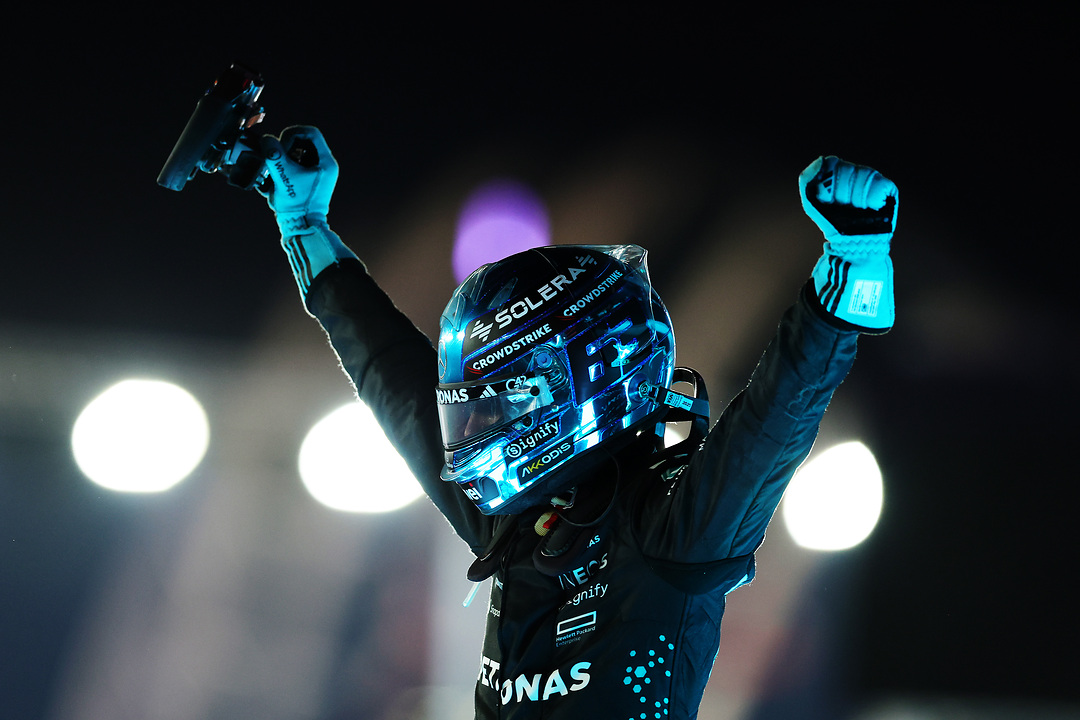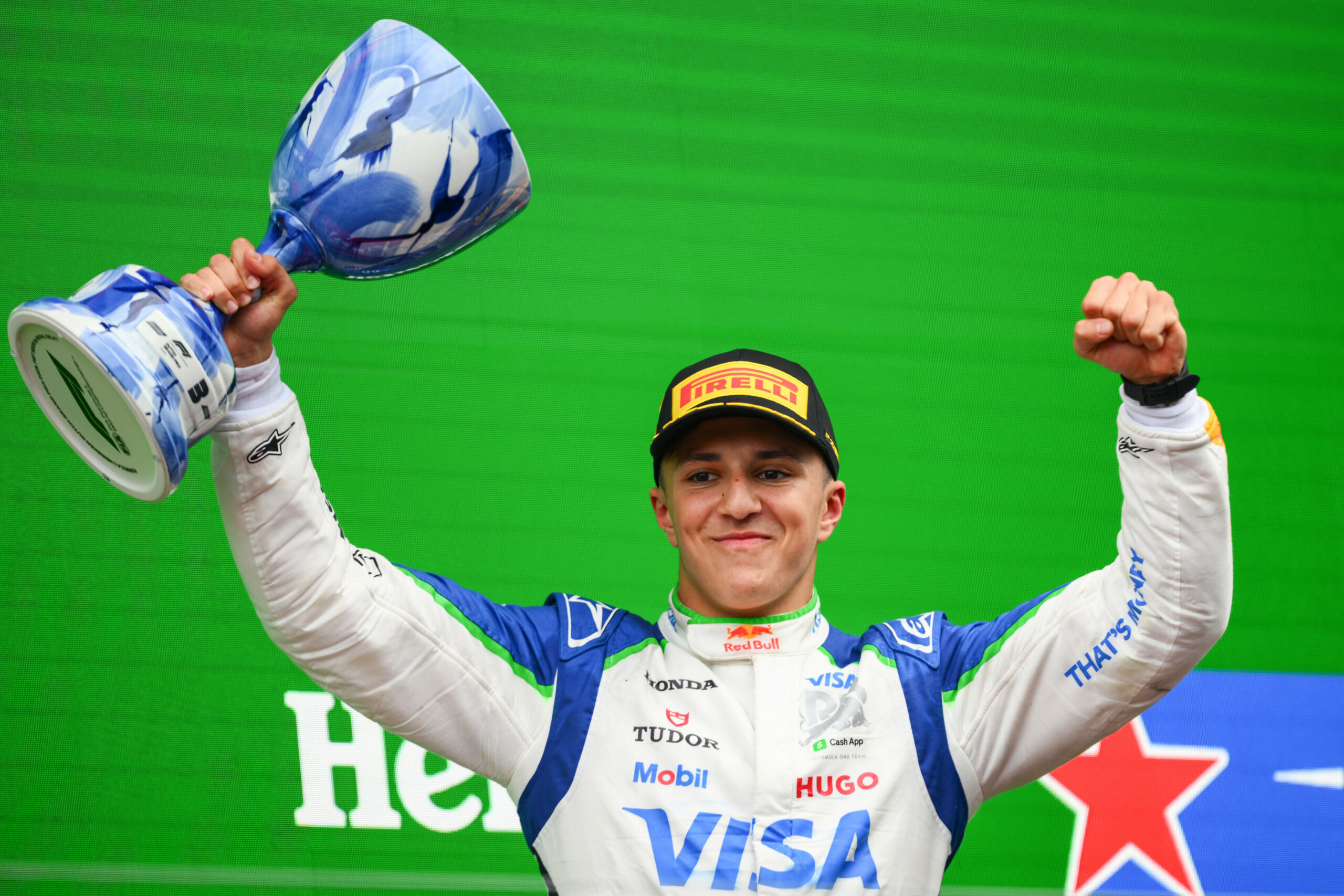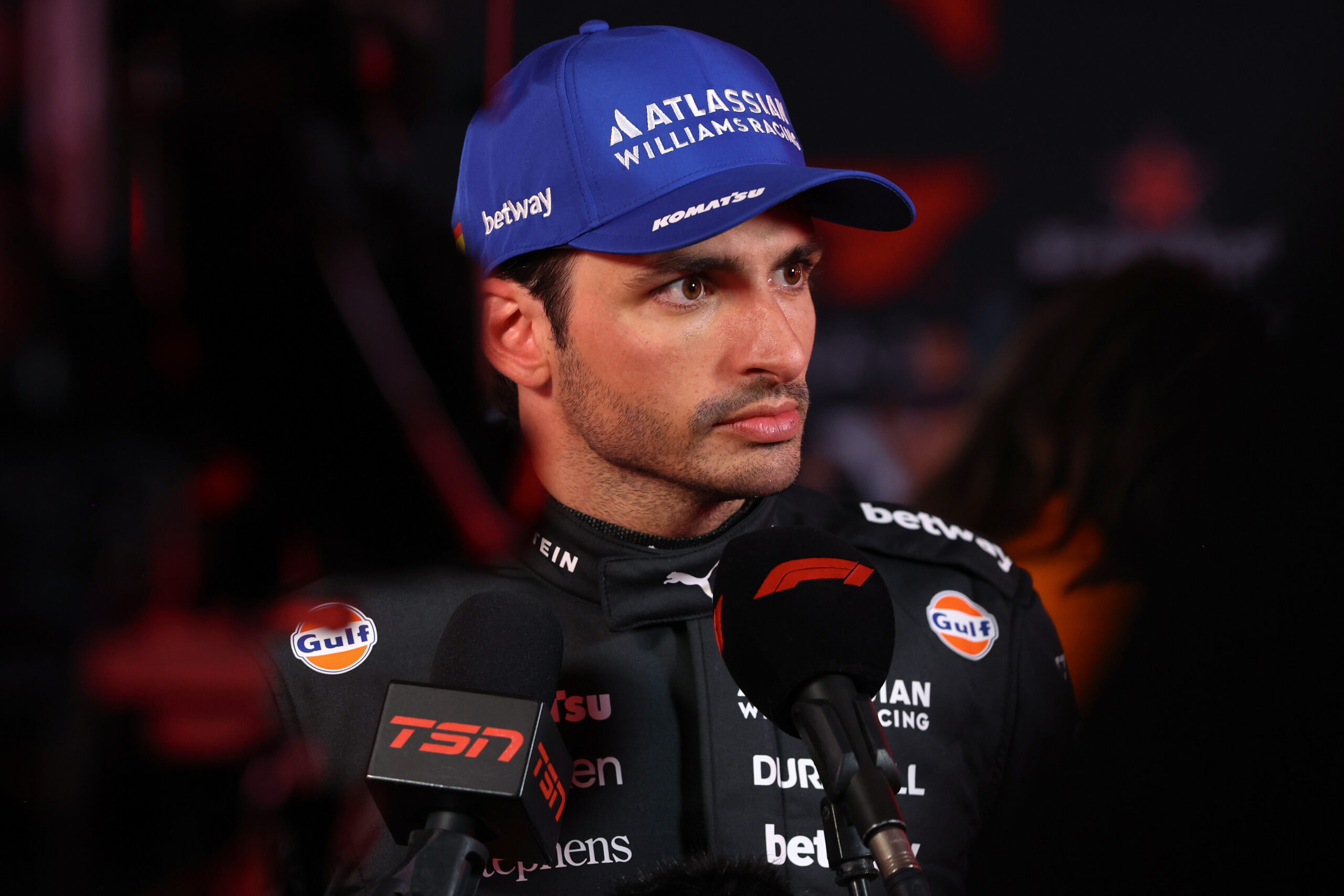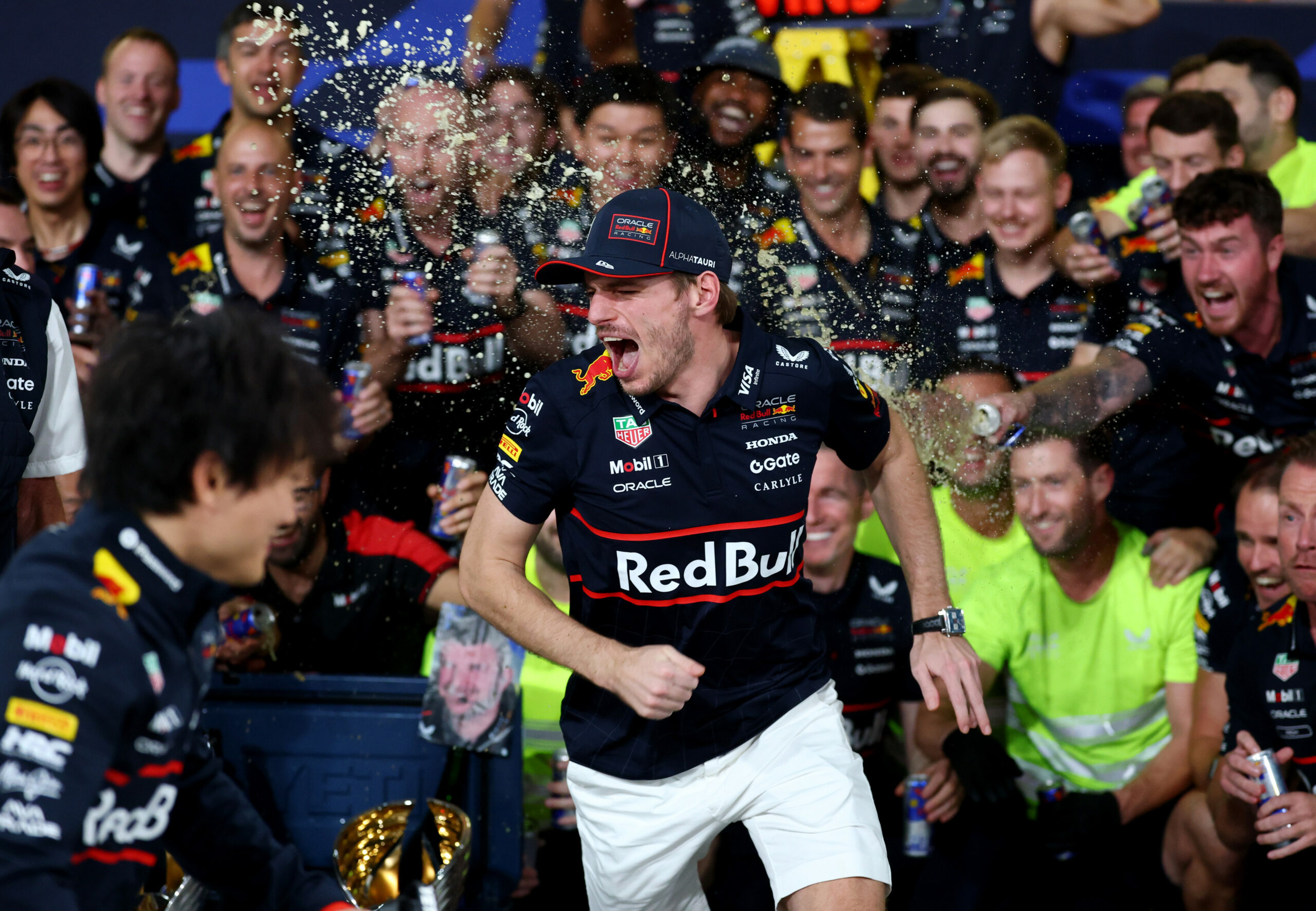It’s already 21 years since Toyota made its F1 debut at the 2002 Australian Grand Prix in Melbourne. Mika Salo managed to score a point for the team that weekend, helped largely by the fact chaos ensued at turn one.
After spending a huge amount of money on the project, the Japanese manufacturer completed eight seasons in the sport before suddenly pulling out in November of 2009. Toyota scored 13 podiums, 3 pole positions and 3 fastest laps over that period of time — but they fell short of winning a race.
Pit Debrief had the opportunity to speak to the widely respected Dieter Gass about Toyota’s time in F1. The German was Chief Race Engineer for six years and gave us some insight into what went on inside the team in the first part our interview.
For Toyota, 2001 was all about preparing for their debut season by doing lots and lots of testing with the TF101. It was far from smooth sailing.
Mika Salo had a big crash at Paul Ricard — thanks to a problem in the suspension — and the Finn broke his back in three places.
The car performance was also well off where it should have been when they got running.
“Testing had a very difficult start because the test car from 2001 was really way off the mark,” stated the German engineer to Pit Debrief.
“That’s why Gustav Brunner was brought in during that year and that effectively lead to the fact that expectations were high. We were quite convinced at the time that we had a good engine and were only missing the car to succeed. That should have been provided by Gustav.”
Toyota’s debut season had most of its high points within the first three races. The carnage at turn 1 on lap one in Melbourne allowed Mika Salo to run in P6.
However, the Finn should have easily passed the ailing Mark Webber in the Minardi with a couple of laps to go. Instead, he had a spin at turn 3 and let Webber off the hook. The crowd went wild for their home hero.

Photo credits: Toyota Racing
Despite the fact Salo scored a point again in Brazil, Toyota would go scoreless for the rest of the campaign. Webber’s P5 in Melbourne saw Minardi beat Toyota to P9 in the standings.
“Yes — it was [very disappointing to lose out to Minardi], but already after the Melbourne weekend. We felt that we really should have overtaken the Minardi easily,” said Gass.
“But at the end of the day there were quite a few more opportunities, where we should have scored points.
“Malaysia, when Allan [McNish] was running in a points-scoring position, and we were ready for his pit-stop. Then Mika, who had been delayed during the race, decided to pit without telling us and drove off with the tyres, which had been sitting there ready and waiting for Allan…
“Or Monza, where again we were very strong but had to retire with a failure in a newly developed suspension element. Monaco, running out of brakes… There were quite a few lost opportunities.”

Allan McNish and Dieter Gass — 2002 German GP
Toyota’s fourth season in Formula One was finally a good one. They scored their first pole, first podium and first fastest lap in 2005. They also had a very strong partnership with Grand Prix winners Jarno Trulli and Ralf Schumacher driving for them as the two bagged five podiums overall in that campaign.

Toyota’s first podium came courtesy of Jarno Trulli — 2005 Malaysian GP
Nonetheless, there was also some disappointment as they missed out on a probable first victory at the Belgian GP as they made an incorrect call on switching Ralf Schumacher to dry tyres far too early in slippery conditions.

Dieter Gass felt this was the moment Toyota started to make genuine steps forward as a team: “We saw things developing in the right direction, making progress not only with the car but as well as a team.”
2005 is also the year of the German’s favourite moment from his time in Formula 1. On the weekend he was the man ‘in charge’ for the first time, Jarno Trulli and Ralf Schumacher finished a strong P3 and P4 behind the two championship contenders from that season – Kimi Räikkönen and Fernando Alonso.
“Barcelona 2005. That was the first race I was in charge and on my own, with Mike Gascoyne not being at the track.

“We finished 3rd with Jarno and 4th with Ralf, with Ralf running in 3rd for quite some time, being the most likely candidate for the podium. Only inverting the order of the final pitstop saw Jarno pass.

Trulli had a brief fire at his first stop as he exited the box that cost him a bit of time through no fault of his own, and initially the swap led to a tricky debrief for Gass with Schumacher after the race!
“You can imagine a very upset Ralf coming into the garage, shouting at me what the hell I had done there. Being able in this situation to calmly explain to him what has happened, and why we had to do it, ending up with him being completely understanding — and that, as said in ‘my first race really in charge’ was very special.”

Toyota seemed to struggle to develop a car during the course of a season. While Gass understands this thought process, he believes most teams were in the same boat.
“I think one could get this impression, but ultimately only very few people at that time had a good and consistent development through the season.”
Gass refers to McLaren in 2009 as a rare success in making such a huge step forward.
After winning the Drivers’ Championship in 2008, McLaren would find themselves a mile off the pace of Brawn, Williams, Toyota and Red Bull at the start of the 2009 season. It was a brand new era of aero regulations, and we also saw the introduction of KERS.
At McLaren, major improvements and upgrades allowed Hamilton to secure his first win and podium at the Hungarian Grand Prix, round ten of seventeen that year. The now seven-time World Champion also won in Singapore as he scored the most points in the second half of the campaign with the Woking-based team.
“The only team, which really managed to stick out in that concern for me was McLaren in 2009,” stated Gass. “From what I remember, they were so far off in winter testing, that the put previous season’s rear wing on the car in testing (that was the year when the ‘narrow rear wing was introduced), but by mid-season they were race winners!
“But I think it would be fair to say that in-season development was not a major strength of Toyota in F1.”
Something that was noticeable during Toyota’s spell in the sport was a habit of running less fuel in qualifying compared to cars around them at times. This would give them a better grid position, it proved to be their downfall on many occasions.
Even if it wasn’t done for TV or media coverage, Gass says pressure was applied to them to do it so they could show the management in Japan that the car had good speed in it.
“I would say [low fuel qualifying runs were] not for TV coverage, but there were people quite often driving us to do this, trying to show the Japanese management, that the car was fast.”
Bahrain 2009 is a case in point as Gass explains. Trulli and Glock locked out the front row for the first time in the team’s history. The Italian’s time in Q3 was 0.584s quicker than the first non-Toyota (Sebastian Vettel) and 0.613s ahead of the championship leader Jenson Button.

Jarno Trulli and Timo Glock celebrate front row lock out — 2009 Bahrain GP
Trulli pitted for fuel three laps before Button, and it would cost him the lead of the race after the first round of stops. He went on to finish P3 behind Sebastian Vettel.
“A very good example which stuck out there in my view was Bahrain 2009. We sealed the first row on the grid with kind of half a second advantage, or something similar, so we could have easily taken more fuel on board and still be on pole.
“Sometimes this was hard to swallow for me since I would have preferred a more conservative race strategy and I am convinced that many times this ultimately would have led to better race results.
“But there was plenty of politics at that time.”

Why did the Toyota project in Formula One end in failure after such a huge amount of money was spent? Gass gave some reasons for it.
“Again, I believe there is no simple and short answer to the question,” said Gass.
“One point of view I would like to offer here is the winter of 2005/2006. As you already highlighted, 2005 was a very strong season to build up upon.
“What happened then, was on one side the change to the V8 engine and on the other hand the tyre change from Michelin, which at that time we had understood very well, to Bridgestone. So, we had to start from scratch on the tyres and had a new engine.
“When we didn’t perform in 2006, we have not been able to understand what the problem was and thus focus on the weakness and improve it — we were somewhat lost and it took time to catch up again, which we only really managed in 2009, then helped by the double diffuser, being one of only three teams to run it.
“I am sure a victory, or even more, was possible over the years, but due to different things, it did not happen. Examples of this, in my view, were Spa 2005 and Hungary 2009. For sure we haven’t been always perfect as a team at the track.
“Another point worth mentioning was, that we, as an organisation, were often too busy with ourselves for a long time, rather than focusing on the job and make things move forward,”

Members of the Toyota team at the 2009 Abu Dhabi Grand Prix — it would be their final F1 race





